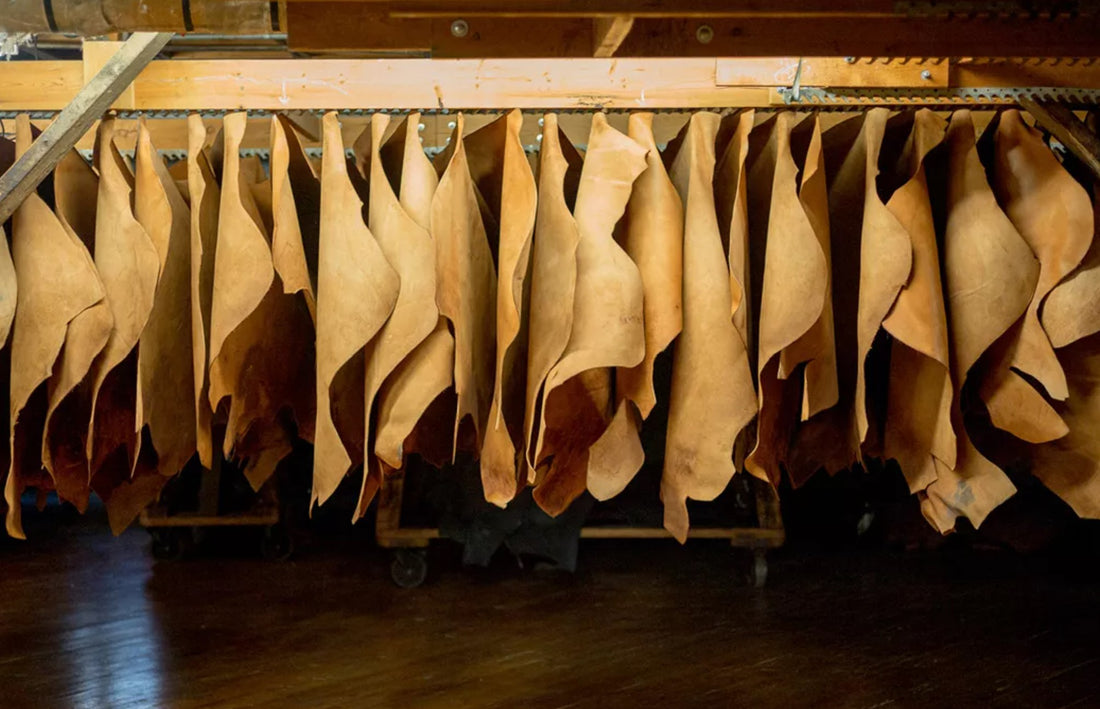
Which Is Better - Veg Tanned or Chrome Tanned?
Share
Leather is a popular material for many different types of products, from clothing and footwear to bags and accessories. However, not all leather is created equal, and there are a few different types of tanned leather that are commonly used in the production of these products. Two of the most common types of tanned leather are vegetable-tanned leather and chrome-tanned leather, and understanding the differences between these two types of leather can help you make more informed decisions when purchasing products made from leather.
Vegetable-tanned leather is made using natural tannins extracted from trees, shrubs, and other plants. This process can take several weeks to complete and results in a leather that is thick and stiff when first tanned, but that becomes softer and more pliable over time. The traditional method of vegetable tanning has been used for centuries, and is still the most popular method in use today. The process begins by soaking the hides in water to remove any impurities and soften the leather. Next, the hides are placed into a large vat filled with a solution of tannins, which are extracted from plants such as oak, chestnut, and mimosa. The hides are left to soak in the solution for several weeks, during which time the tannins penetrate the leather, causing it to become stiff and firm. The hides are then removed from the solution and are left to dry, after which they are typically oiled or waxed to protect the leather and enhance its natural color.
Vegetable-tanned leather is known for its durability and rich, natural color, and is often considered to be a more premium product than chrome-tanned leather. Due to the long and complex process, vegetable-tanned leather is a bit more expensive than chrome-tanned leather. Because of the natural tannins and the lack of chemicals used in the process, vegetable-tanned leather is considered to be eco-friendly. One of the most notable characteristics of vegetable-tanned leather is that it will change over time, developing a unique patina that reflects the wearer's lifestyle, it can become a darker, richer color, and it will become more supple and comfortable to use. This unique patina is often highly prized by leather enthusiasts, and makes vegetable-tanned leather stand out from other types of leather.
Chrome-tanned leather, on the other hand, is made using synthetic chemicals, such as chromium sulfate, which can be processed much faster than vegetable-tanned leather. Chrome tanning is a process that typically takes less than a day, and the resulting leather is generally softer and more supple than vegetable-tanned leather, which makes it more comfortable for use in clothing and footwear. Chrome tanning is cheaper than vegetable tanning and more versatile in terms of colors, patterns and thickness. The finished product can also be more consistent in terms of its color and texture, making it a popular choice for manufacturers of leather goods.
It's worth noting that chrome-tanned leather has a reputation of being less eco-friendly than vegetable tanned leather. This is because of the chemicals used in the chrome tanning process are often considered to be harmful to the environment and to human health.
When it comes to the premium-ness, it depends on what aspect you consider. In terms of natural look and traditional process, vegetable-tanned leather is considered to be more premium. It is a unique product, each hide has its own characteristics and the leather will age beautifully over time. On the other hand, chrome-tanned leather is more versatile, softer, and cheaper than vegetable-tanned leather, which makes it more popular with manufacturers and consumers.
So, in terms of premium-ness, it depends on what aspect you consider. Generally, vegetable-tanned leather is considered to be more premium due to the natural process and resulting unique look and feel. Whereas Chrome-tanned leather more widely used due to its versatility and softer feeling.
It's also worth noting that there are several other types of tanned leather, like brain-tanned, alum-tanned and oil-tanned, each with its own unique properties, but vegetable and chrome tanned are the most widely used.

